Ants are one of the most successful and dominant species on Earth. On top of their caste system is the queen ant, who populates the colony by producing generations of workers and reproductive male and female ants.
What do queen ants look like? The appearance of queen ants varies with species. Nonetheless, queen ants are the largest ants in every colony. A queen ant can be distinguished by its enlarged thorax, which contains its wing muscles. Queens of most ants initially have wings but will shed them off before building their own colony, leaving very prominent wing scars.
An ant colony can live for decades as long as its queen or queen is alive. In this article, you will look at the characteristics of the queens of commonly encountered ant species and present measures on how to get rid of them.
What Is a Queen Ant?
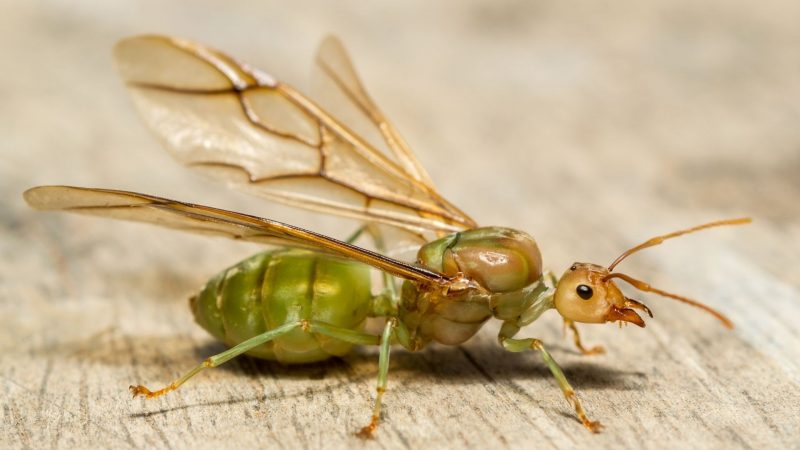
For most ants, queens are the founders and, therefore, the most important member of the ant colony. They are the only females in the colony capable of producing eggs, which would later become workers, soldiers, and reproductive females and males. Depending on the species, an ant colony can have single or multiple queens.
How Big Is a Queen Ant?
Queen ants are the largest ants in the colony. Of all ants, African driver ants of the genus Dorylus have the largest queens, which can be as huge as 1.54 to 2″ (39 to 50.8 mm) in total body length.
Do Queen Ants Have Wings?
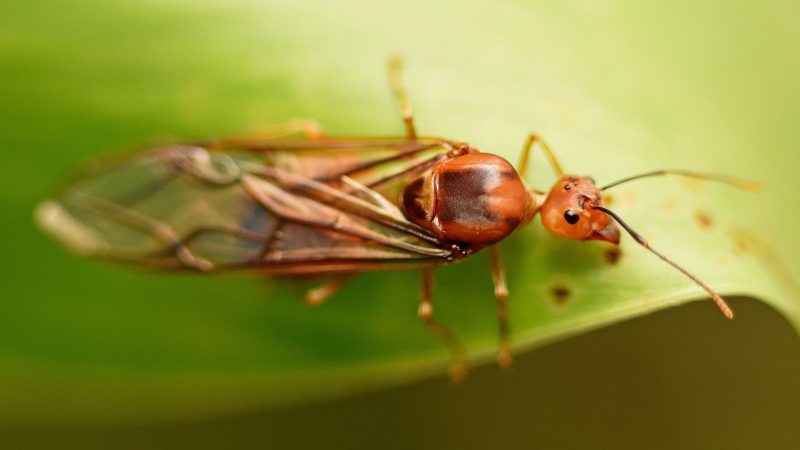
Queen ants are born with wings except for the army ants. In the colony of army ants, only males are born with wings, while the female workers and young queens are wingless.
Queen Ant Lifespan
| Species | Lifespan |
|---|---|
| Carpenter ant | over 10 years |
| Red imported fire ant | 6 – 7 years |
| Texas leafcutter ant | 20 years |
| Sugar ant | >7 years |
| Argentine ant | <1 year |
| Army ant | 4.5 years |
| Pavement ant | 15 – 20 years |
| Weaver ant | >8 years |
| Pharaoh ant | 4 – 12 months |
The lifespan of queen ants varies with species. While some may only live for months, others survive for decades. The environment also dictates the lifespan of queens and their colonies. Given favorable conditions, commonly known species of queens have the lifespan indicated in the table above.
How Does an Ant Become a Queen?
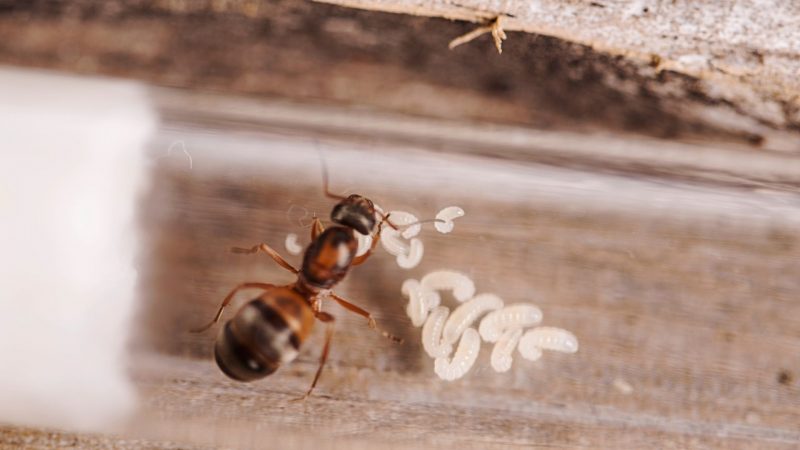
Once a colony has been established, the queen of a mother colony will produce reproductive males along with reproductive females, who will then become future queens. During a certain time of the year, reproductive males and females will engage in a nuptial flight where mating occurs midair.
After mating, the young queen will land on the ground, shed its wings, and search for a suitable nest for its own colony. However, not all inseminated queens will be able to complete this journey as most queens will fall prey to nearby predators.
If a young queen lives long enough to find a favorable spot, the queen will burrow into the soil and lay its first group of eggs; a new ant colony will soon emerge with the queen on top of its caste.
The Queen Ant’s Features
The appearance of queen ants varies from one type of ant to another. Here you’ll take a look at the characteristics of some of the most common types of queen ants:
Carpenter Ant Queen
Carpenter ant queens are black and larger than the workers. While workers can only measure up to a quarter or half an inch, queen ants, on average, are usually 0.75 to 1″ (1.9 to 2.54 cm) in length. Some species of carpenter ants have one queen, while others have more than one queen within a colony.
Fire Ant Queen
Queens of fire ants are black, reddish-brown, or red in color and are larger (up to 3/8” in length) than their polymorphic workers (1/16 to 1/5″ in length). The queen ants can produce as many as 800 eggs per day.
Leafcutter Ant Queen
As with other types of ants, the colonies of leafcutter ants are founded by the queen ant. One of the most common species of leafcutter ants is the Texas leafcutting ant (Atta texana). The queen ant in the colony is rust-brown and is about 3/4” in length. Leafcutting ants live in large colonies of up to two million workers with as many as four or five fertile queens.
Sugar Ant Queen
Sugar ants are native to Australia. Queens are larger than the workers whose size varies from 0.2 to 0.6” (5 to 15 mm). These ants were initially thought to form monogyne colonies, but recent findings revealed that some colonies are polygyne with 2 to around 100 queens present, depending on the size of the colony.
Argentine Ant Queen
Argentine ant queen ants are dark brown in color with reddish legs and antennae and yellow mandibles. The queen ants are several times larger than the workers. They measure about 1.78 to 1.97” (4.5 to 5 mm) in length, while workers are only 0.01” (0.3 mm).
Army Ant Queen
Army ants form monogyne colonies. The queens are dark brown and measure about 0.90” (23 mm). Unlike most ant queens, army ant queens are blind and wingless but have extraordinarily large ovaries and gasters.
Pavement Ant Queen
Pavement ant queens are dark brown and measure around 0.24 to 0.31” (6 to 8 mm). Similar to male pavement ants, the queens are born with wings. Depending on the size of the colony, pavement ants can have either monogyne (single queen) or polygyne (multi-queen) colonies.
Both queens and workers are characterized by parallel lines (grooves) in their heads and thorax.
Weaver Ant Queen
As with most ants, weaver ant queens are larger and heavier than males. Weaver ant queens are 0.79 to 0.98” (20 to 25 mm) in length and vary in color (red, brown, green), depending on the species.
Pharaoh Ant Queen
Pharaoh ant queens are about 0.16” (4 mm) in length, and the workers are just half the size of the queen. Colonies can have as many as 300,000 individuals and multiple queens.
While the newly-mated queen found most pharaoh ant colonies, colonies may also be formed through the budding or splitting of the mother colony. During this process, workers of the mother colony move to another nest carrying a brood along with a new queen.
What Is the Role of Queen Ants in the Colony?
The life and the death of ant colonies lie on the queen ants. Without the queens, ants will not be able to start new colonies and expand existing ones as workers could not produce eggs.
How to Find a Queen Ant?
Queen ants are easily recognizable from the rest of the ants in the colony. Some of the distinguishing features of an ant queen are as follows:
- Only young queens and males are born with wings, with the exception of wingless army ant queens.
- Typically, queens are several times larger than the worker ants.
- Ant queens have relatively large thorax (mid-section), which houses their wing muscles.
- The mature queens will have predominant wing scars on their thorax.
- A queen’s gaster tends to be larger in some species to accommodate highly specialized reproductive organs as well as fat and glycogen reserves.
What Happens if You Kill the Queen Ant?
Queen ants keep their colonies alive. The death of a queen ant, specifically in monogynous colonies, may lead to the collapse of the whole colony. On the other hand, in polygynous colonies, the death of a single queen will not affect the structure of the colony as there are other queens who would still produce more eggs.
Why Do Ants Kill Their Queen?
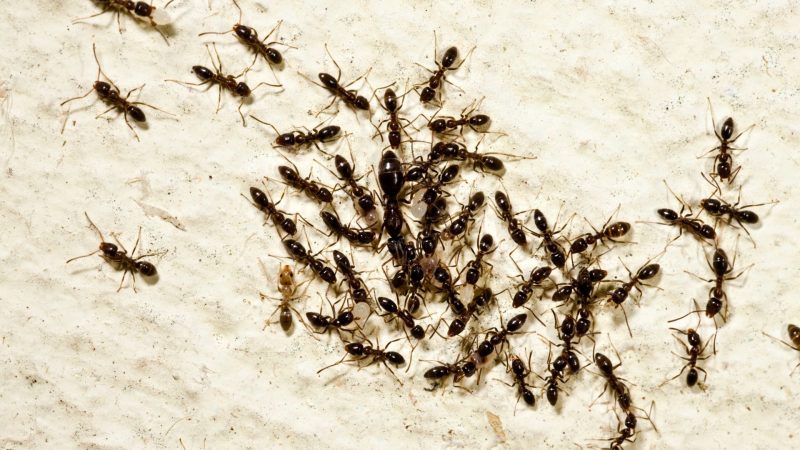
Execution of supernumerary queens can be observed both in monogynous and polygynous colonies.
Queen-Killing in Monogyne Colonies
After the nuptial flight, cooperative colony founding behavior can be observed in queens of monogynous ants, especially if the density of the newly mated queen is high. These queens will band together and cooperate in rearing their first brood.
However, as the colony grows, local competition becomes more intense. Queens will struggle among themselves for possession of the colony’s brood pile. More often than not, the heaviest queen would dominate and survive. Other queens usually end up getting injured and subsequently executed by the workers, probably on the basis of their physiological attributes.
Queen-Killing in Polygyne Colonies
In contrast with monogyne workers, polygyne workers execute the most fecund queens to prevent the colony from attaining a state of monogyny.
Does the Queen Ant Ever Leave the Nest?
Queen ants spend their lifetime laying eggs deep inside their colony’s nest. The following are the only occasions where a queen ant can be seen out of its nest:
- Young queens will move out of their nests as they prepare for the nuptial flight.
- During the nuptial flight, males and young queens will mate while suspended in the air.
- After the nuptial flight, the queen will land on the ground and will begin searching for a suitable nest.
- In the case of army ants, the queen leaves the statuary bivouac and moves to their new temporary nest during the colony’s migratory phase.
- Other than natural causes, a queen will move out of its nest after a disturbance by a predator. The queen will travel on foot with its workers in search of a new nest.
How to Get Rid of a Queen Ant?
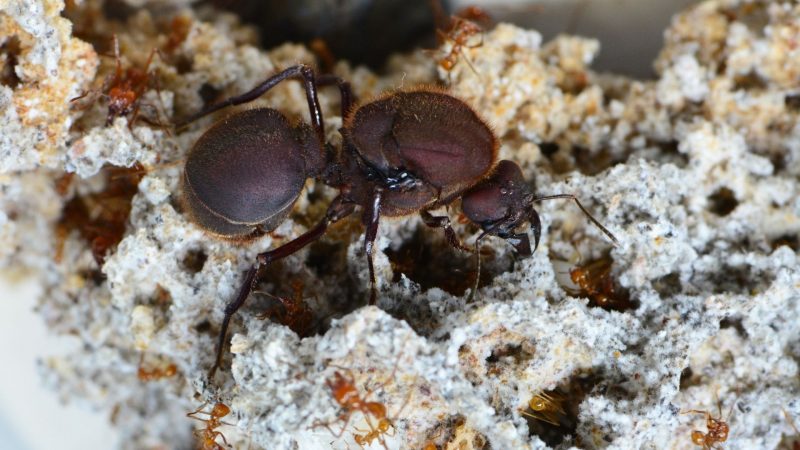
Adult queen ants live in the deepest chamber of the nest. Thus, getting rid of queen ants could be quite challenging. Here are some of the direct and indirect ways of eliminating a queen ant:
Ant Baits
The use of ant baits is highly desirable, especially if the ant nests are located in inaccessible areas or in cases where the nest cannot be located. When using ant baits, it is important to identify the type of ants present to ensure that the baits will draw the attention of foraging ants.
Baits should be placed strategically along the ant trail. Once the foragers pick up the baits, they will carry them back to their nesting sites and share them with the rest of the colony members, including the queen.
Insecticidal Dust
In cases where nesting sites can be easily located, insecticidal dust may be employed as a form of direct treatment. Since this is a form of direct treatment, the application of insecticidal dust in nesting sites would eliminate the whole colony, including the brood, workers, and queens.
When using dust formulations, it is important to read and follow the label regarding the amount that should be applied to eliminate the ants effectively. Excessive treatments may trigger colony budding, which could worsen the infestation.
Mound Treatment
Individual mound treatments are commonly employed specifically in ant species with multiple queens. Mound treatments are fast-acting and target ant nests, especially those located outdoors. A typical approach would be using a liquid drench, which could quickly eliminate an entire colony of ants.
Mound treatments are often used in combination with ant baits to address smaller colonies that have survived after drenching.
Hire a Pest Management Professional
If you are unsuccessful in getting rid of ants, chances are the queens of the colonies have survived, and the colony recovers, leading to re-infestation. In such cases, it would be best to seek the services of a pest management professional.
Related: How to Get Rid of Ants | Ultimate Guide
List of Sources
Flying Ants: Collecting Ant Queens to Start a Colony. Arizona State University.
Control Fire Ants. Mississippi State University.
Caste. Carleton College.
Pavement Ant. University of Nebraska – Lincoln.
Insects in the City: Texas Leaf Cutting Ant. Texas A&M AgriLife Extension.
- How to Get Rid of Copperheads | Practical Guide - August 27, 2023
- How to Get Rid of Corn Snakes | What Makes Them Aggressive? - August 27, 2023
- How to Get Rid of Alligators | Safety Measures and Removal Methods - July 16, 2023

